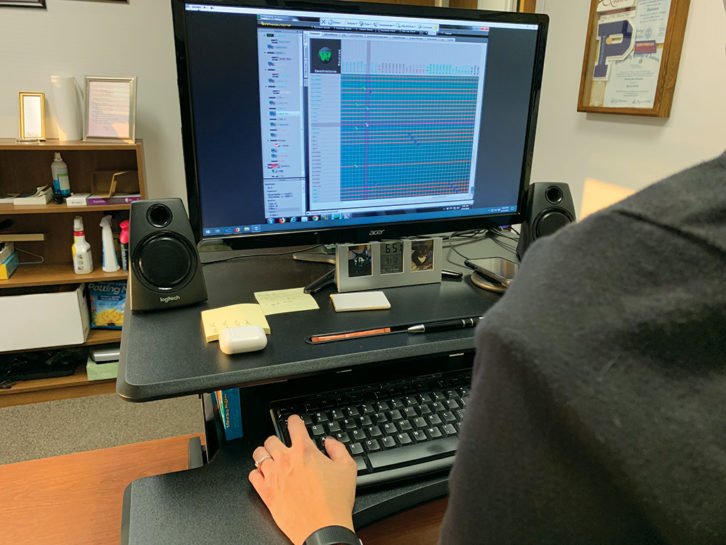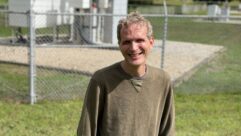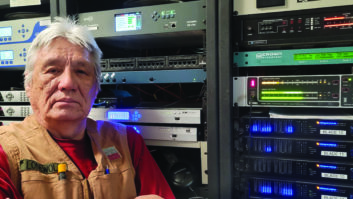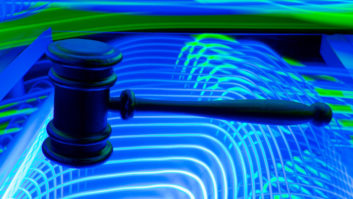
I was thinking the other day about what a broadcast engineer does. For the first couple of decades of my career, that was a fairly narrow list: Maintain and repair studio and transmitter equipment. Build out a studio or transmitter facility. Maybe fix the plumbing or install a radio in the GM’s car.
But at some point, things began to change. Personal computers began to enter the broadcast infrastructure. Then networks and file servers began to appear, and we had to add new skills. At the same time, staples such as turntables, cart machines and reel tape recorders began to disappear. As the years slid by, even CD players began to fade from the scene.
In a way, this paralleled changes in the auto service industry. Mechanics who for decades wore greasy coveralls and worked on carburetors, distributors and water pumps traded their coveralls for more professional attire, went from oil- and grease-stained hands to blue nitrile gloves and became technicians rather than mechanics. As with broadcast engineers, a whole new skill set was needed, one that included computers, sensors and OBD ports.
PORTS AND PASSWORDS
As I look around my company and consider the top-shelf group of engineers that we employ, I realize that their primary skills are in the IT domain.
We recently had one northern market CE leave for warmer climes, and as his newly-hired replacement came in and began work, the challenge was not transmitters, processors and antenna systems, but rather networks, IP addresses, ports and passwords. Because of the IP-heavy infrastructure, Job No. 1 had to be learning the networks at the studios, offices and transmitter sites and figuring out how it all works.
In the earliest days of my career, I worked at a local FM station (which few people listened to because there were few FM radios out there) changing automation tapes and doing top-of-the-hour rip-and-read news. The chief engineer was a guy named Don Freestone, and my memory is of him hunched over a smoking soldering iron back in his engineering shop, which was next to the AM transmitter room. That was pretty much the image and stereotype of the broadcast engineer for a long time. Back in the day, I even saw an episode of “WKRP in Cincinnati” with a brief glimpse of a broadcast engineer with that same stereotype.
Today, the image is a little different. Today, it is the engineer, probably dressed in khakis and a polo, sitting (or standing) at a desk hunched over a laptop computer, fingers flying over the keys as mysterious characters scroll by on the screen. That image is not far off. In this company at least, that is where our engineers spend most of their time, not making wiring changes or repairing equipment.
In today’s IT-centric broadcast plant, “wiring changes” are done with a mouse, making and breaking crosspoints in software. Even transmitter remote control systems are configured in software, using SNMP and Ethernet cables rather than the fat multi-conductor control cables that we used for that purpose for decades.
With the changes in infrastructure have come big changes in the ways we as broadcast technical professionals do business, and as I mentioned, the skill set has changed. For young upstarts, this is no big deal; IT is their native language; for old guys like me, well, we have a lot to learn.
TALL ORDER
So what does that mean for broadcast engineering as a field?
For starters, it means that the job description has to change, and because of that, our recruitment sources also have to change. Do we seek out and hire RF and audio people and train them in IT, or do we hire IT people and train them in audio and RF?
Either path, on the surface, is valid, but out here in the real world, it’s a tall order to find RF and audio people, especially young people just entering the workforce that have any training and expertise in audio and RF. It’s much easier to find young college or trade school grads who are trained in IT.
The practical course of action, then, is to find upstart IT people and train them in the other aspects of the broadcast engineering trade. Easy, right? Maybe not. There are a number of challenges to this course of action.
First, the career path model, while we weren’t looking, has changed dramatically. No longer are young people content to work and learn under a more experienced “guru” and then move up the ladder over a period of years as their skills develop. Those skills are in such demand that upstarts hit the ground running, landing high-paying jobs right out of school. They often move from job to job every year or two, always getting a better deal and a bigger paycheck.
Except for purely IT people, the broadcast industry cannot compete with that, not really. What we offer is a slow rise up the ladder that includes a lot of learning of other skills that are really well outside of the wheelhouses of IT-trained people.
And of course we offer lower pay and lousy hours. Why on earth would any young upstart trained in IT want to subject herself to that if she could easily land a job at Verizon or T-Mobile that pays more, has better benefits and regular hours?
So therein lies the challenge. It would seem to be nearly impossible. And yet … and yet … I have managed to find and hire a number of superb youngsters, real rock stars, over the past few years who have taken to the broadcast engineering trade like a fish to water.
Yes, they love their ones and zeros. They love their obscure command line syntax and code.
But they also love radio. And they have come to love transmitters, transmission lines, antennas, audio processing and sound just as much. It has been a real pleasure watching these youngsters bloom into what will be tomorrow’s chief engineers and engineering managers.
I might add that it hasn’t hurt one bit that our audio infrastructure has moved into the realm of ones and zeros (AoIP), or that transmitters, remote controls, audio processors and even STLs now have IP addresses and communicate with users in the IT domain.
The question, then, is how do we find such people? That’s a tough question, and I don’t have an easy answer. The best I can tell you is to be on the lookout for youngsters who might have the knack for radio.
Job fairs are often a good place to look. IT folks attend job fairs looking for employment, and maybe they are drawn to the banner with the radio station’s call sign because they listen to or have heard of the station, and they’re intrigued. Could it be that this radio station has a job for me that could be something more than assigning IP addresses and creating subnets?
At some point as you talk to them, the inevitable question is asked: “What does a broadcast engineer do, anyway?” The answer: “We do it all.”
And the one thing you can promise is that they’ll never get bored. Let Verizon or T-Mobile compete with that!
Cris Alexander, CPBE AMD DRB, is director of engineering of Crawford Broadcasting Co. and technical editor of RW Engineering Extra.
Comment on this or any article. Write to [email protected].












